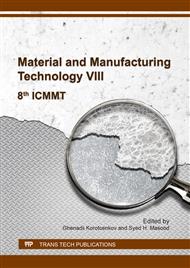p.177
p.182
p.187
p.196
p.201
p.207
p.215
p.221
p.226
Prediction of the Creep and Tensile Properties of Near-α Titanium Alloys
Abstract:
The tensile and creep properties of near-α Ti alloys with added Al, Ga, Sn, Zr, Mo, Nb, Ta, W, Si, and Ge were analyzed by using a regression analysis technique. The tensile test was performed at room temperature for 27 alloys. The creep test was carried out under a constant stress of 137 MPa at 650 °C for 30 alloys and 310 MPa at 600 °C for 21 alloys. The squared multiple correlation coefficients for the tensile elongation and minimum creep strain rate were 0.97 and 0.84, respectively. In addition, the effect of α stabilizing elements on the tensile and creep properties of those alloys was examined. The tensile elongation and minimum creep strain rate decreased between Al equivalences of 8 and 10. However, those values can be scattered depending on the composition and microstructure even with an almost constant value regarding the Al equivalence. The effect of adding Ga on the tensile elongation and minimum creep strain rate was also examined by using regression equations.
Info:
Periodical:
Pages:
201-206
Citation:
Online since:
October 2017
Keywords:
Price:
Сopyright:
© 2017 Trans Tech Publications Ltd. All Rights Reserved
Share:
Citation:


